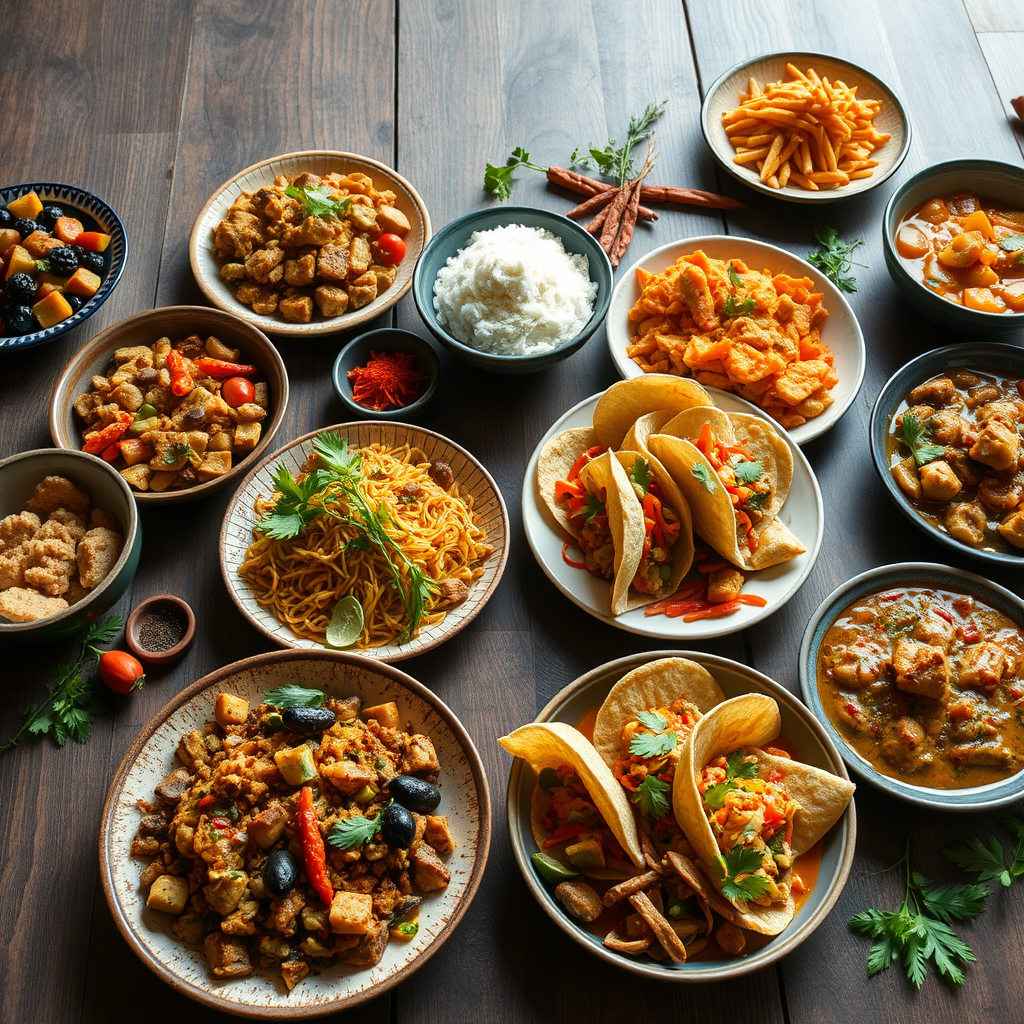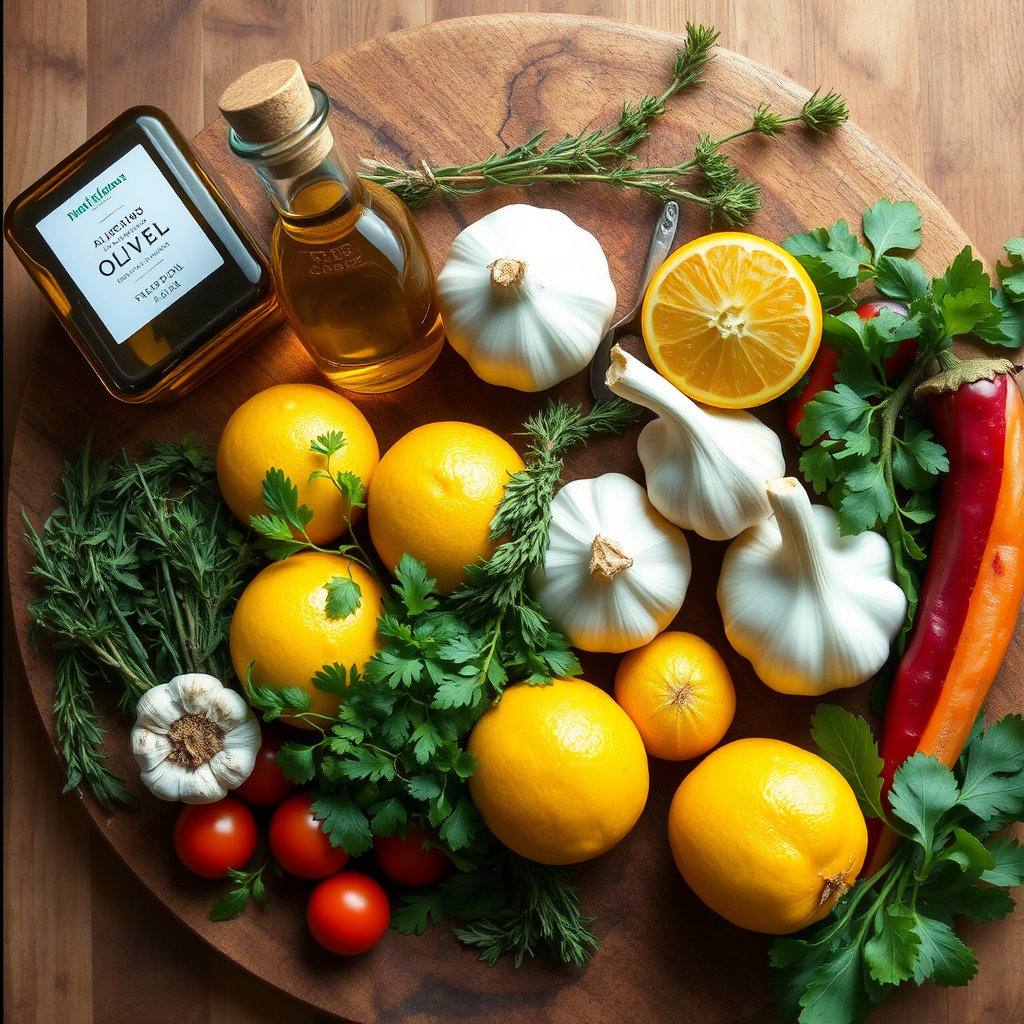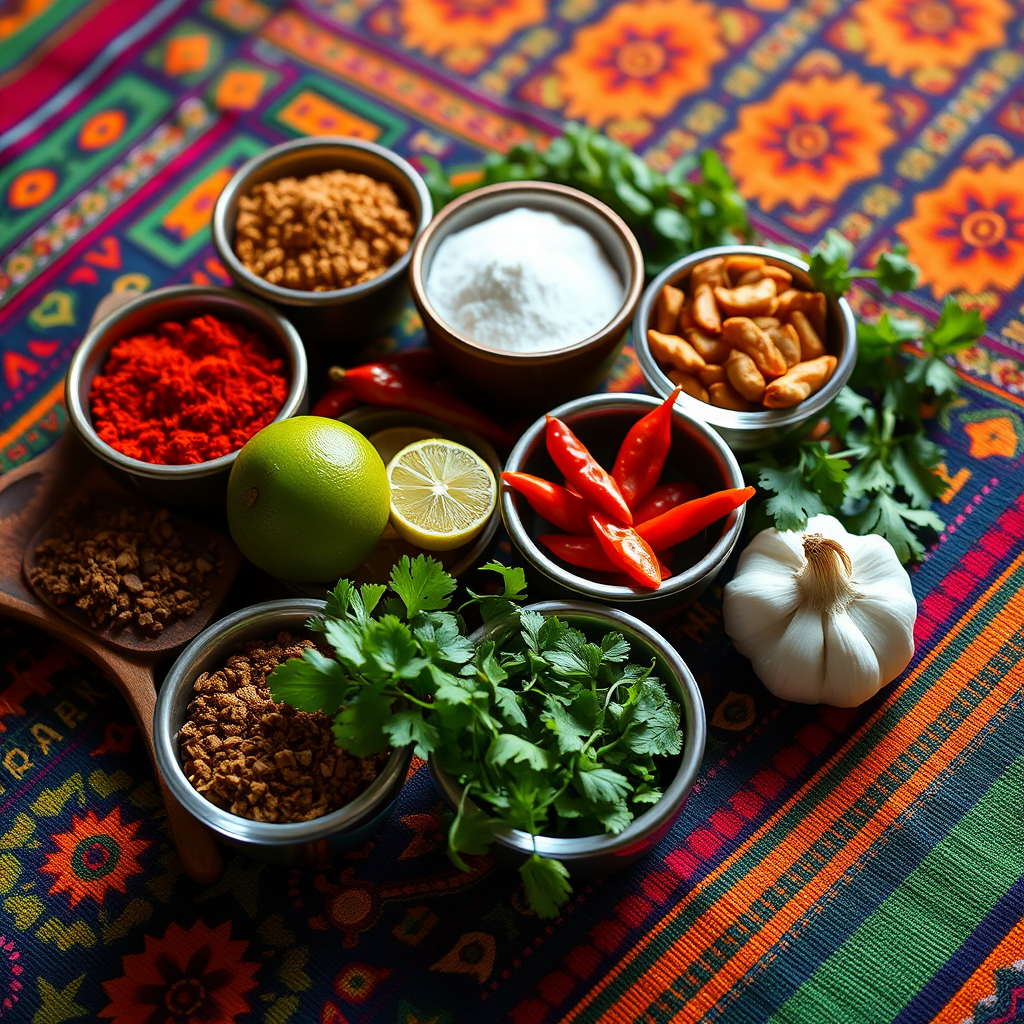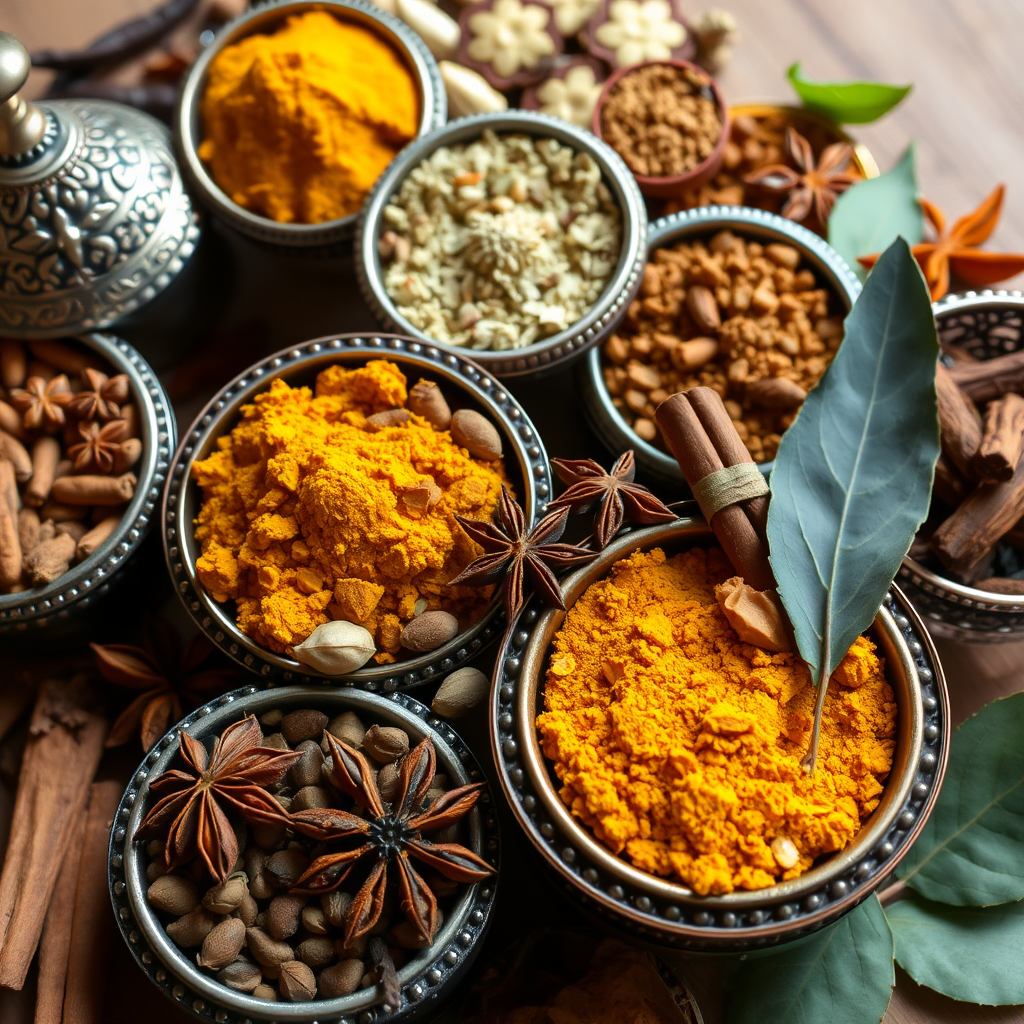Global Cuisine Adventures: Exploring International Flavors at Home
Published December 15, 2024
CULINARY EXPLORATION

Embark on a sensory shopping adventure through the world's most beloved cuisines, all from the comfort of your own kitchen. Transform everyday abundance into extraordinary flavor journeys that celebrate the seasonal harmony of global ingredients.
Mediterranean Magic: Sun-Kissed Flavors
The Mediterranean diet isn't just about health—it's about creating a food symphony that celebrates seasonal flavors and mindful eating. Start your culinary rhythm with these essential ingredients that bring the warmth of the Mediterranean to your table.
Essential Pantry Items:
- Extra virgin olive oil
- Sea salt and cracked pepper
- Fresh herbs (basil, oregano, thyme)
- Lemon and lime
- Garlic and shallots

Create your own taste design with a classic Greek-inspired bowl: combine quinoa with diced cucumbers, cherry tomatoes, red onion, and feta cheese. Drizzle with olive oil and lemon juice, then finish with fresh dill. This edible art showcases how simple ingredients can create complex, satisfying flavors.
Asian Fusion: Balancing Sweet, Sour, Salty, and Umami
Asian cuisine teaches us about sensory shopping—selecting ingredients that create perfect harmony between contrasting flavors. The key to authentic Asian cooking at home lies in understanding the fundamental balance of taste elements.
Quick Asian Stir-Fry Sauce Recipe
Ingredients:
- 3 tbsp soy sauce (or tamari for gluten-free)
- 2 tbsp rice vinegar
- 1 tbsp sesame oil
- 1 tsp fresh ginger, grated
- 2 cloves garlic, minced
- 1 tsp honey or maple syrup
- 1/2 tsp red pepper flakes
This versatile sauce transforms any combination of vegetables and protein into an authentic-tasting Asian dish. The beauty of this flavor journey lies in its adaptability—use whatever seasonal vegetables you have on hand for a truly mindful eating experience.
Latin American Vibrancy: Spice and Everything Nice
Latin American cuisine celebrates everyday abundance through bold spices, fresh citrus, and vibrant colors. The culinary rhythm of these dishes comes from layering flavors—starting with a sofrito base and building complexity with each ingredient.
Create your own sofrito by blending onions, bell peppers, garlic, cilantro, and tomatoes. This aromatic base becomes the foundation for countless dishes, from Cuban black beans to Mexican salsas to Peruvian ceviches.

Essential Latin Spice Blend
- 2 tsp ground cumin
- 1 tsp smoked paprika
- 1 tsp chili powder
- 1/2 tsp oregano
- 1/2 tsp garlic powder
- 1/4 tsp cayenne pepper
- Salt and black pepper to taste
Indian Subcontinent: The Art of Spice Layering
Indian cuisine teaches us that taste design is about more than just flavor—it's about creating a sensory experience that engages all five senses. The key to authentic Indian cooking lies in understanding how to bloom spices and layer them for maximum impact.

Building Your Indian Spice Collection
Start with these fundamental spices that form the backbone of most Indian dishes. Each spice contributes to the overall food symphony, creating layers of flavor that develop and deepen during cooking.
Cumin, coriander, turmeric, garam masala
Cardamom, cinnamon, cloves, bay leaves
The secret to Indian cooking is the tempering technique called "tadka"—heating oil and adding whole spices until they release their aromatic oils. This creates the foundation for your dish and ensures that every bite carries the full spectrum of flavors.
Ingredient Substitutions: Adapting Global Recipes
One of the greatest challenges in international cooking is finding authentic ingredients. However, with thoughtful substitutions, you can maintain the integrity of traditional flavors while working with locally available ingredients.
Creating Your Global Kitchen
Building a globally-inspired kitchen doesn't require expensive specialty equipment. Focus on versatile tools that can adapt to multiple cooking styles and techniques from around the world.
Essential Cookware
- Cast iron skillet (for searing and baking)
- Large stockpot (for soups and pasta)
- Wok or large sauté pan
- Sharp chef's knife
Specialty Tools
- Mortar and pestle (for spice grinding)
- Microplane grater (for citrus and ginger)
- Bamboo steamer (for dumplings)
- Spice grinder or coffee grinder
Your Global Flavor Journey Starts Now
Remember that authentic international cooking is about more than just following recipes—it's about understanding the cultural context and seasonal rhythms that shape each cuisine. Start with one region that excites you, master a few key techniques, and gradually expand your repertoire.
The world's flavors are waiting to be discovered in your own kitchen. Each dish you create becomes part of your personal food symphony, connecting you to cultures and traditions from around the globe while celebrating the everyday abundance available to us all.